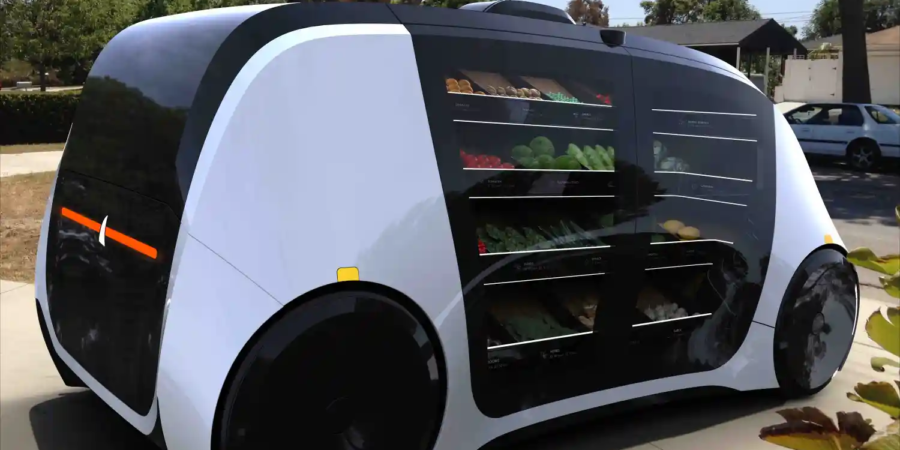
Photo: TechCrunch+
Robotmart claims to be the new solution for mobile food delivery by offering a “white label platform that allows for full customization” and caters to big brand stores like Target, 7-Eleven, and Walgreens.
As a seemingly alternative option to Instacart and Shipt, Robomart allows consumers to use the company’s app to shop the inventory of a nearby mobile van. When they confirm they’re ready to shop, the van drives to the user’s location with groceries and items in stock. Using RFID, the customer can open the Robomart van’s doors with the app, and when they close the doors, the Robomart automatically tracks what was taken and charges the credit card on file.
According to MarketWatch’s analysis, “The global artificial intelligence delivery robot market is forecasted to reach a multimillion-dollar valuation by 2030, exhibiting an unexpected CAGR during the forecast period of 2023-2030, as compared to data from 2018 to 2022.”
The Robomart van is driverless and was initially developed as an AI-controlled autonomous vehicle. However, due to regulations and other factors, it’s now planned to be teleoperated via a remote human who is always in full control of the van.
In an interview with TechCrunch+, founder Ali Ahmed stated how he’s “talked to wholesalers about equipping separate trucks to mimic different sections of a grocery aisle — from dairy, to poultry, to meat, to vegetables.” Additionally, “Grocers and other retailers who license the technology will retain all of the customer information rather than giving it away to Uber, Postmates, Instacart or others.”
According to FreightWaves, “No other company has embraced the store-hailing model quite like Robomart has, and that may be the case for the foreseeable future.” In January 2022, the company received a patent for “one-tap grocery ordering via a self-driving minimart with checkout-free technology,” so it will be difficult for other companies to compete once Robomart goes driverless.
The Observer also shared the following research: “Online grocery ordering and delivery promised to be faster and more convenient by having someone else pick and deliver our goods. However, less than 4% of groceries are sold online in the U.S. because the vast majority of consumers don’t trust someone else picking their fresh groceries, especially when it comes to perishables like fruits and vegetables.”
Additionally, a driver would take the same amount of time, around an hour, to deliver groceries on-demand, but to most consumers, this small added convenience doesn’t outweigh the higher cost.
In the same article, Ahmed from Robomart expressed how “the rise of grocery stores had a direct negative impact on Americans’ health, as we ended up eating less fresh food every day and instead ate more processed foods with preservatives to increase shelf life.” He added that grocery stores also “resulted in an increase in road traffic and congestion, with trips in gasoline-powered cars generating carbon emissions. Worst of all, this has led to lower access to food as people need to travel greater distances and spend more time shopping.”
Robotmart seems like it could be a good alternative to traditional grocery shopping and delivery services, as it allows consumers to choose their own groceries without having to travel to the store themselves.
But there are still some questions that consumers should consider, such as how reliable the food will be monitored for temperature and what can be done to prevent possible tampering. Another aspect that has not been fully tested yet is how quickly and efficiently it will be to restock a Robomart van, especially during times of elevated shopping like during the holidays.


Leave a Reply
You must be logged in to post a comment.